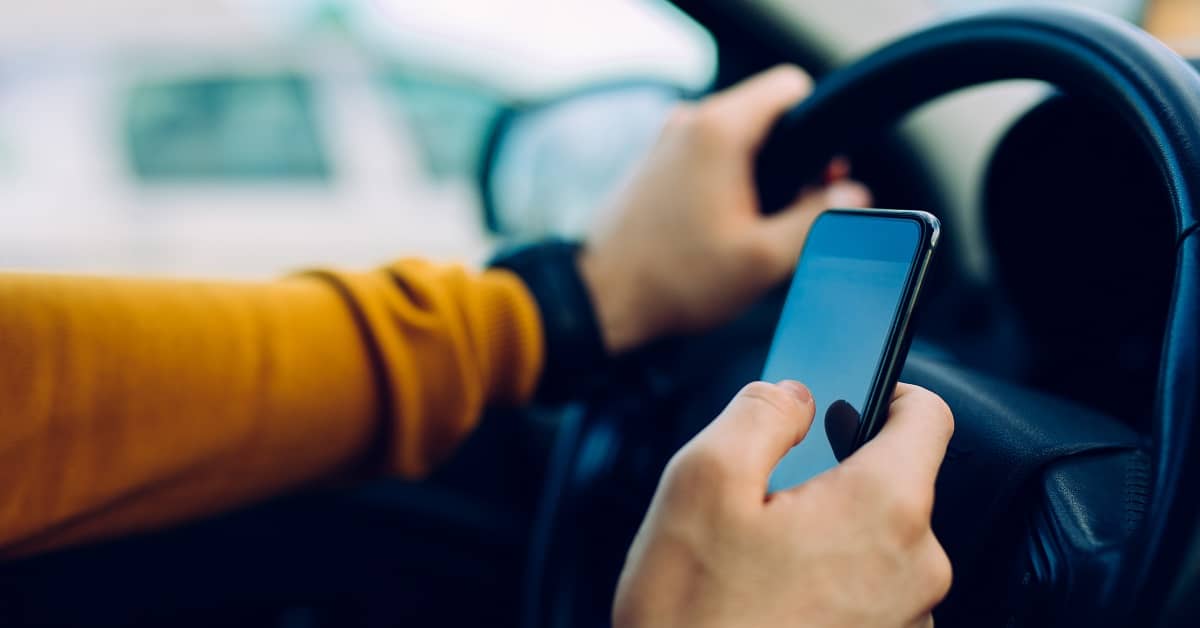
Distracted driving is a major problem on the roads of Wisconsin and throughout the nation. In spite of laws like Wisconsin’s ban on texting and driving, many people still make the dangerous decision to multitask behind the wheel.
Given how common distracted driving is, it is often worth considering if the driver who causes an accident was distracted. Proving distracted driving, however, can be challenging.
The distracted driving accident lawyers at Studinski Law, LLC will fully investigate your crash and gather all evidence regarding the other driver’s negligence. Please call (715) 343-2850 today for a free case evaluation. Studinski Law, LLC serves clients in Plover, Marshfield, and other areas of Wisconsin.
When you consult with a lawyer, share anything you remember leading up to the crash, as the accident happened, and afterward. You may have seen the other driver holding a cell phone or engaged in another kind of distraction (such as eating, drinking, smoking, talking to passengers, etc.).
Generally, your word will not be sufficient by itself to prove your distracted driving accident claim. However, your lawyer can use what you remember as a starting point for investigating the accident.
If you told the police officer who responded to the scene that you saw that the other driver was distracted, you have already taken steps to establish the negligence of the other driver. The police report may also include a preliminary conclusion that the accident was caused by distracted driving and/or that the at-fault driver admitted to being distracted. The report will also document any citations issued for distracted driving and other violations.
Your lawyer will request a copy of the police report and review it for details on distracted driving and other factors in the accident. The accident report may also identify witnesses to the accident who can shed further light on what happened.
Depending on where and when the crash occurs, one or more witnesses may have seen the accident and/or the moments leading up to it. Other witnesses may also report that the at-fault driver was distracted, further bolstering your accident claim.
You may have been able to speak to some of these witnesses immediately after the accident. Your legal team may also be able to identify witnesses through the police report, revisiting the accident scene, and more.
Witnesses may corroborate your assertion that the other driver was distracted, or they could share information that contradicts your claim. Both types of testimony are valuable. In the former case, eyewitnesses who testify that they saw distracted driving support your claim against the at-fault driver. In the latter case, our attorneys will examine all of the facts, including, for example, any inconsistent statements by those witnesses or evidence that they actually did not have a clear view of the other driver.
You may assume that evidence of distracted driving is confined to the inside of the vehicle, leaving little in the way of physical support. However, documenting and analyzing the scene of a distracted driving accident can yield a number of useful insights.
Accident investigators and reconstructionists can take measurements and photograph tire marks to determine the point at which the at-fault driver applied the brakes (or failed to apply the brakes), the speed and direction at which the vehicle was traveling, and more. Experts can testify to errors in the management of speed, braking, and steering, all of which may support your claim that the other driver was distracted.
Multiple sources of electronic data may support your distracted driving accident claim. These records, however, may be held by a variety of different parties, none of whom will simply hand over information when asked.
Accident lawyers can compel these parties to release relevant data through subpoenas. A subpoena is a legal order that requires parties to produce requested evidence.
Some of the crucial electronic records that may be obtained by subpoena in your distracted driving accident claim include:
In the event of a texting and driving accident or an accident where the driver was talking on the phone, your lawyer may subpoena records from the at-fault driver’s cell phone provider. These records may show that:
All of these records could be crucial if your distracted driving accident claim centers on whether or not the at-fault driver was paying more attention to their phone than the road.
Most passenger vehicles nowadays are equipped with an EDR. Similar to the “black box” found on a plane or commercial truck, these devices record the driver’s actions and the operation of the vehicle just prior to an accident.
EDR data serves as a digital counterpart to investigation and reconstruction of the accident scene. By hiring experts to interpret the data, your lawyer can present evidence that the driver was going too fast, failed to stop, and more. These facts, combined with other evidence in your case, can strengthen your claim against the distracted driver.
Digital cameras are just about everywhere, from private homes to businesses and government buildings. The positioning of one or more cameras may capture the scene of the accident, and analysis of the footage may show that the at-fault driver was indeed distracted.
Well-positioned cameras are often discovered when evaluating the scene of the accident. Experienced investigators and members of your legal team can use the footage to build your distracted driving accident claim.
Some law firms leave money on the table when they handle accident claims. This is often the result of insufficient investigation and preparation.
At Studinski Law, LLC, our lawyers have extensive experience handling car accident claims where the negligence of a distracted driver causes serious injuries or death. We go the extra mile to investigate all aspects of the crash, build a strong claim on your behalf, and pursue the full compensation you deserve.
Please call (715) 343-2850 today for a free case evaluation with our distracted driving accident lawyers. Studinski Law, LLC serves clients throughout Wisconsin, including Plover, Marshfield, and more.
